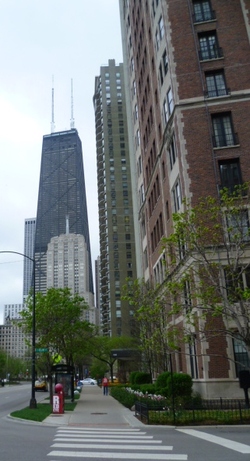 A view south along Lake Shore Drive
A view south along Lake Shore Drive I hadn't spent any significant amount of time in Chicago since the late 1980s. It was a nostalgic experience to revisit old haunts (my childhood neighborhood is virtually unchanged) and a surprise to see how many areas of the city have positively evolved over the nearly 30 years since I left it. I found it exhilarating, often beautiful, lively, and on the whole a place in which I imagine it would be interesting to live.
With Chicago, I took my usual approach of getting off the beaten path. To me, understanding a city does not come from visiting its museums or famous tourist sites. Instead it's essential to visit a range of neighborhoods, across ethnic and socioeconomic lines. My wanderings revealed a city more complex than the image a casual tourist might bring home.
While in the Chicago area, I was lucky enough to stay with my very kind sister and her husband, who live in the western suburb of Elmhurst. I always rely on public transport, bicycle or walking to get around a city, and from my suburban base, I stuck to my normal procedure. Every day I took a suburban bus to the beginning of Chicago's elevated metro system. Although there are commuter trains from Elmhurst that go to the city center, I took the bus, as that stopped conveniently in front of my sister's house and took me not to the business center, but instead to the edge of the city. This was a perfect starting point for seeing the many faces of Chicago.
Each of my multiple trips into the city focused on in-depth walks through particular neighborhoods. Over two weeks I visited Hyde Park, Washington Park, and Chinatown in the south, Garfield Park, Humboldt Park, Wicker Park and the Near West Side in the west, Norwood Park, North Park, Andersonville and Lincoln Park in the north, and the Near North Side and Loop in the center. These neighborhoods differed greatly from one another structurally, architecturally, ethnically and socioeconomically. I believe they give a representative view of life in the city, skewed somewhat to higher socioeconomic groups.
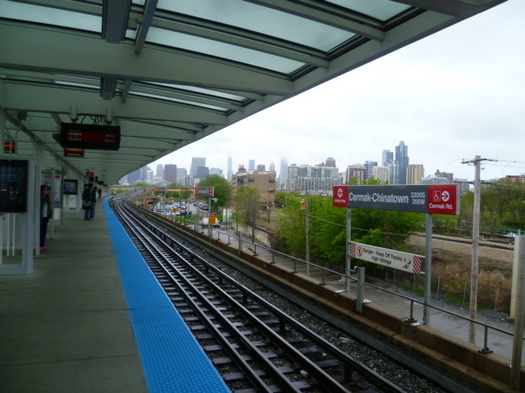 A view from the elevated metro system, at the Chinatown station.
A view from the elevated metro system, at the Chinatown station. Although the Chicago area appears to have a comprehensive public transport system, in comparison with other wealthy metro areas I've lived in or visited, Chicago's system is a disappointment. When I investigated the time it takes to get from Elmhurst to parts of Chicago other than the very downtown core, I was astounded. To get from my sister's house in Elmhurst, an inner suburb west of the city, to the neighborhood of North Park, on the north side of Chicago, it takes about 45 minutes by car. To go by bicycle takes about 2 hours. With public transit, if you make the right connections, it would also take two hours. This for a distance that, as the crow flies, can't be much more than 10 miles. I've never seen anything like it in any major city in the developed world (outside of the United States, that is). I calculated trips of a similar distance in Tokyo and Berlin (from a suburban town on a main train line into the center and then to another neighborhood in the city) and here's what I found: in Tokyo a similar trip would take 40 minutes by car and 38 minutes by public transport. In Berlin, it would be 34 minutes by car and 42 minutes by public transport. With an inadequate system like this, only the poorest, those without cars, would ever choose to use public transport to go anywhere other than the downtown core in Chicago. With freeways and free or highly subsidized parking in many parts of the city, driving is a no brainer in Chicago. Highways in Tokyo have tolls and in both Berlin and Tokyo, parking can get expensive quickly, so you really have a disincentive to drive and save little or no time by doing it.
Below are some views of the rather antiquated metro system.
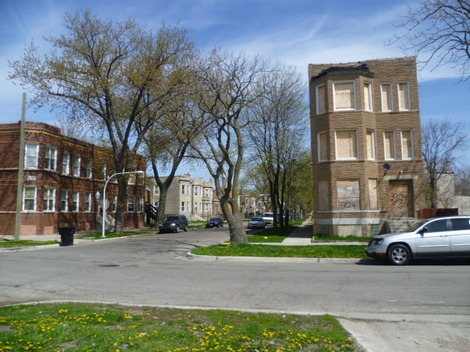
This is a very poor area with, I believe, a predominantly black and Hispanic population. Infrastructure has obviously been neglected for years (decades) and housing generally appears often on the point of collapse. I have not found corresponding areas of blight, such as you see in an American city like Chicago, in any other wealthy country.
I imagine that this area was once, maybe over 60 years ago, a working-class neighborhood of European immigrants, Today the once dense and probably lively neighborhoods seem depopulated and abandoned. I tried to imagine what these streets might have been like in their heyday. I wondered what could have gone so wrong to produce a fantastic crash in neighborhood vitality and health. White flight is one part of the explanation, but it's hard to avoid wondering how city government could have let things fall to such a state of degeneration. Did they have no resources?
A key characteristic of these desolate neighborhoods is the huge number of vacant lots where apartment buildings and houses once stood. It puzzled me to think about the incredible waste of what should be valuable land. The areas I visited on the West Side are less than 30 minutes from downtown Chicago by public transport, yet they are really a virtual wasteland.
The layout of the streets, however, and even the style of the remaining buildings is often very pleasant. The streets are generally tree lined and the old brick buildings could be attractive, even elegant, if rehabilitated. But the empty lots, boarded up windows and shamefully run-down infrastructure - in conjunction with what are almost certainly pretty horrific social circumstances - make for an insurmountable barrier to revitalization. This area will probably remain a kind of no-man's land for decades to come. I should mention that these neighborhoods are generally well served by large parks which, sadly, are also derelict.
Here are some more street views from the west side of the city.
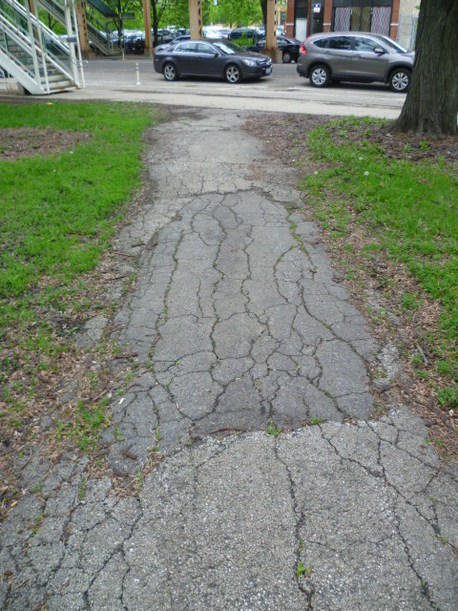 Walkway in park in Garfield Park
Walkway in park in Garfield Park The most frustrating part of it, for me, is that the basic elements required for a beautiful city are here. It's not as if these neighborhoods are cursed structurally. There are green medians planted with trees, streets with ample space for bike lanes, expansive parks all around, and even reasonable public rail transport within walking distance. What's missing is security, decent maintenance and, most importantly, quality housing at the density required to bring the streets to life. Could the problem be that the city simply doesn't need more affordable housing and hence can ignore large swathes of its area?
In many parts of the world, the physical endowments of these blighted neighborhoods would be envied. What wouldn't be envied is the catastrophic social disaster that seems to be taking place here. America's cities are a reflection of its society, and the reflection is a pretty awful one.
Scenes of decay, below.
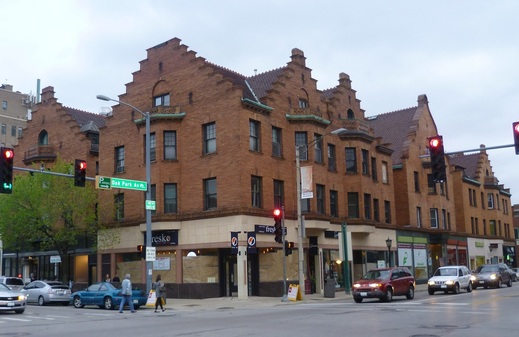 Apartment building in Oak Park that could almost be at home in northern Europe.
Apartment building in Oak Park that could almost be at home in northern Europe. Chicago is a city known for, and blessed with, excellent architecture. Certain areas can have the elegant feeling of nice neighborhoods in European cities, with lovely brick buildings that seem to have been built with high-quality materials and care. I imagine that many of them were, in fact, built by European immigrants around a century ago and they continue to be the domain of the better off in the city, with a high proportion of white residents. It's been very encouraging to see the most beautiful of Chicago's neighborhoods undergoing a revitalization. Many young people are settling in the city and bringing vitality back to once great neighborhoods.
A surprise to me was that new housing in Chicago is frequently built in the old, beautiful styles of the past (see the far right picture below). Neighborhoods are retaining their original character and because of the beauty and detail of the older style of buildings, the streets are regaining a density of attracive detail that draws in people who come to just to stroll and enjoy the ambience. The streetscapes are an attraction in themselves.
Below are a few shots of the beautiful buildings and streets in Chicago.
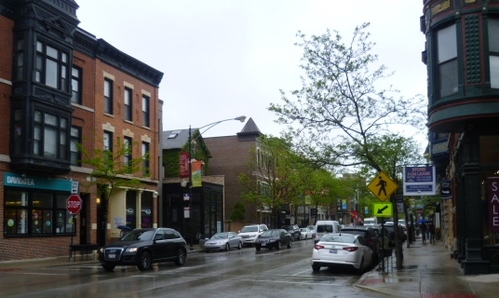 Gentrified and very pleasant Armitage Avenue
Gentrified and very pleasant Armitage Avenue Better neighborhoods in the city now are full of a wide range of restaurants, stores, and other businesses that put them on par, in terms of commercial life, with streets in a city like Amsterdam.
Where the streets don't match up to what's on offer in a great city like Amsterdam is in their dispoportionate allocation of space to auto traffic and parking for cars. The streetscapes of Chicago are dominated by cars. There are few dedicated bicycle lanes (I saw almost none), and sidewalks are narrower than they should be. In fact, sidewalks here are unattractively made of poured concrete and offer almost no interesting details to draw pedestrians in. They create few meeting spaces for people (there are few benches and quiet nooks), and they provide very limited space for restaurants and cafes to use for outdoor seating. This makes the streets of the nicer neighborhoods of Chicago, in general, much less lively and attractive than those of Amsterdam and other great cities of Europe. Chicago needs to put pedestrians first to get its streets right.
In my opinion, a lower density of detail is what often sets American cities apart. It's a function, to a great degree, of the auto dominated landscape. If you're passing through quickly in your car, the small details don't matter. If you're walking, however, the details make all the difference in a street experience. Because of America's car-centric culture, sidewalks and other pedestrian areas have gotten short shrift. We don't invest in them because we don't walk. It seems the emphasis is on quick, cheap, easy-to-maintain pedestrian areas that are devoid of artistry and charm.
Below are a couple of fairly pleasing street scenes in Chicago.
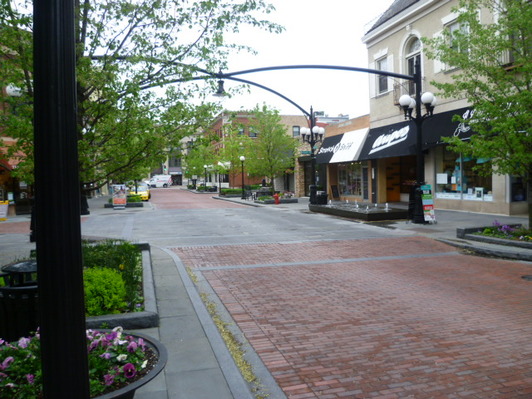 Side street in business district of relatively wealthy Oak Park.
Side street in business district of relatively wealthy Oak Park. The examples of beautiful streetscapes are, however, the exception. What would be the average standard in cities in most of the rest of the rich world are in America the domain of the wealthy.
Extraordinaly high income and wealth inequality in America, in conjunction with an auto-dominated transport mentality, leads to cities that are largely unattractive and often jarringly ugly.
I'm thrilled that many areas of Chicago are moving in the direction of complex, detail-rich, pedestrian-oriented streets. But I'm afraid that the beautiful streetscapes I've seen here are going to remain the realm of the the privileged.
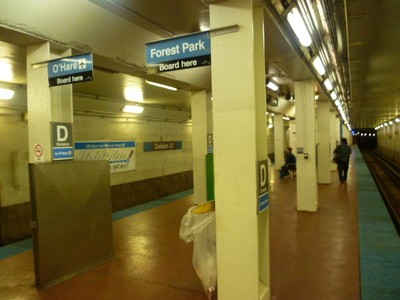
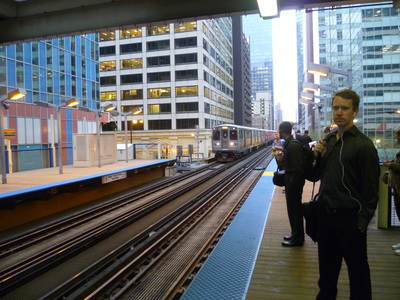
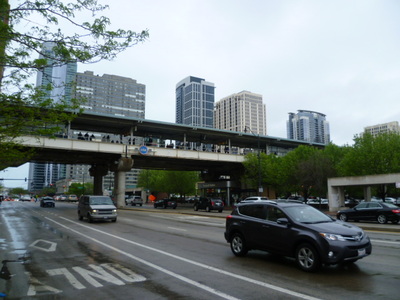
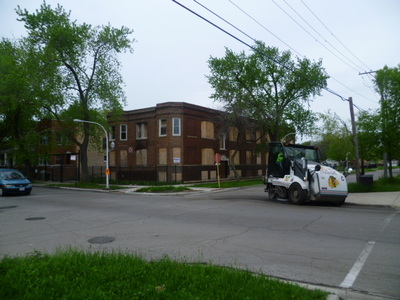
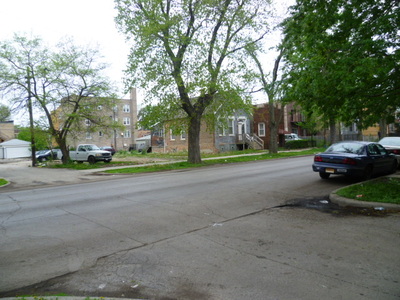
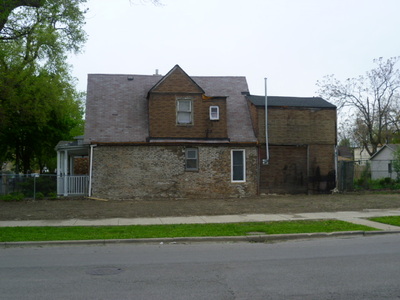
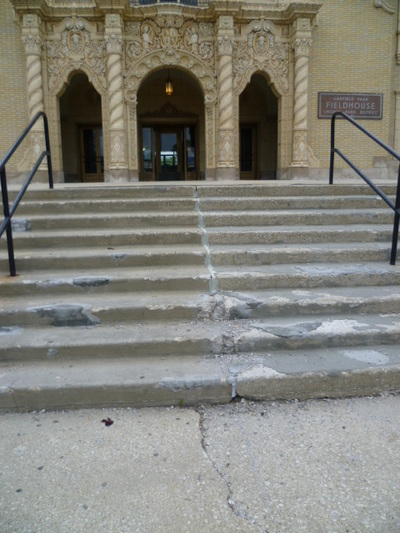
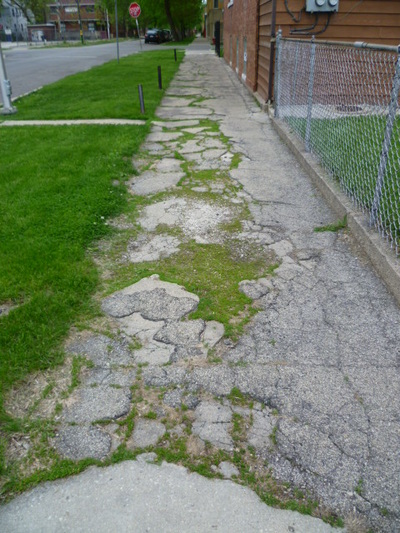
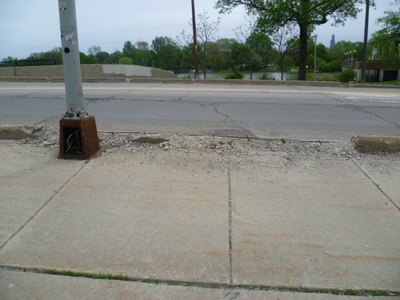
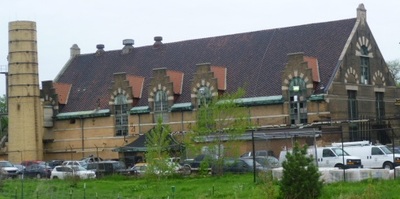
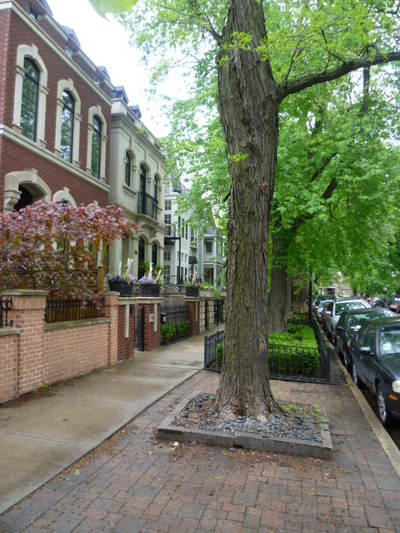
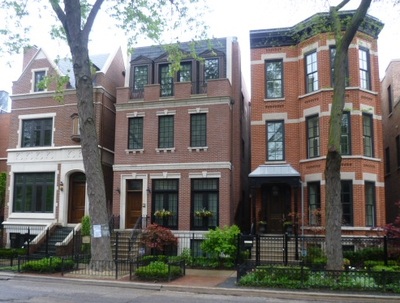
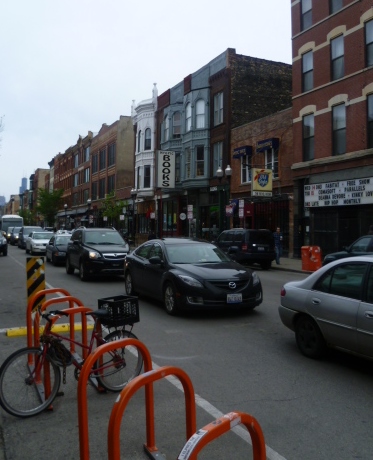
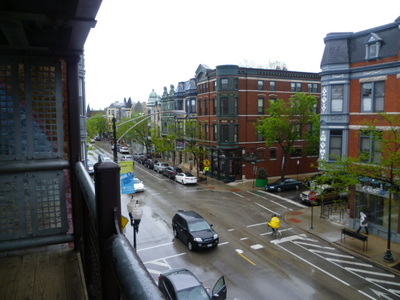

 RSS Feed
RSS Feed

